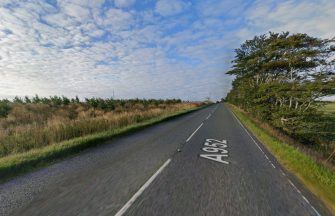The Draconid meteor shower will peak on Tuesday evening, providing stargazers across the UK with a chance to see it.
The shower happens annually and this year the meteors – also called shooting stars – will be visible in the northern hemisphere until Thursday October 10, with the best views predicted to be on Tuesday, October 8.
The meteor shower is unique in that visibility is best in the evening, rather than in the early hours of the morning, and the bright lights can be seen with the naked eye.
It tends to be less active than other showers, with around ten meteors expected to be seen per hour. They are also slower than others – so they will remain visible for one to two seconds.
But what is the Draconid meteor shower and how can you see it?
What is a Draconid meteor shower?
Meteor showers occur as our planet passes through debris trails left behind by comets and asteroids, which eject bits of rock and ice as they orbit the sun.
The Draconids are the result of Earth intersecting with such a trail from the comet 21P/Giacobini-Zinner when it nears the comet’s orbit in October each year.
The shower gets its name because the meteors appear to be coming from the direction of the constellation Draco the Dragon.
But the Draconids are sometimes referred to as the Giacobinids in honour of the comet’s discoverer, Michel Giacobini, who spotted the celestial object in 1900.
The Draconid meteors move slower than those witnessed during other showers, meaning they can be visible for one or two seconds.
How can I see it?
Draconids are best seen in the evening after nightfall, rather than in the early hours of the morning.
Observing conditions are predicted to be good on Tuesday as the shower occurs just before the moon’s first quarter phase, so even faint meteors will be easier to see.
For the best view of the shower, try to find somewhere with little light pollution and an unobstructed horizon, the Royal Museums Greenwich recommends.
There is no need to use binoculars or a telescope for these meteor showers – they will be visible to the naked eye.
Follow STV News on WhatsApp
Scan the QR code on your mobile device for all the latest news from around the country



























